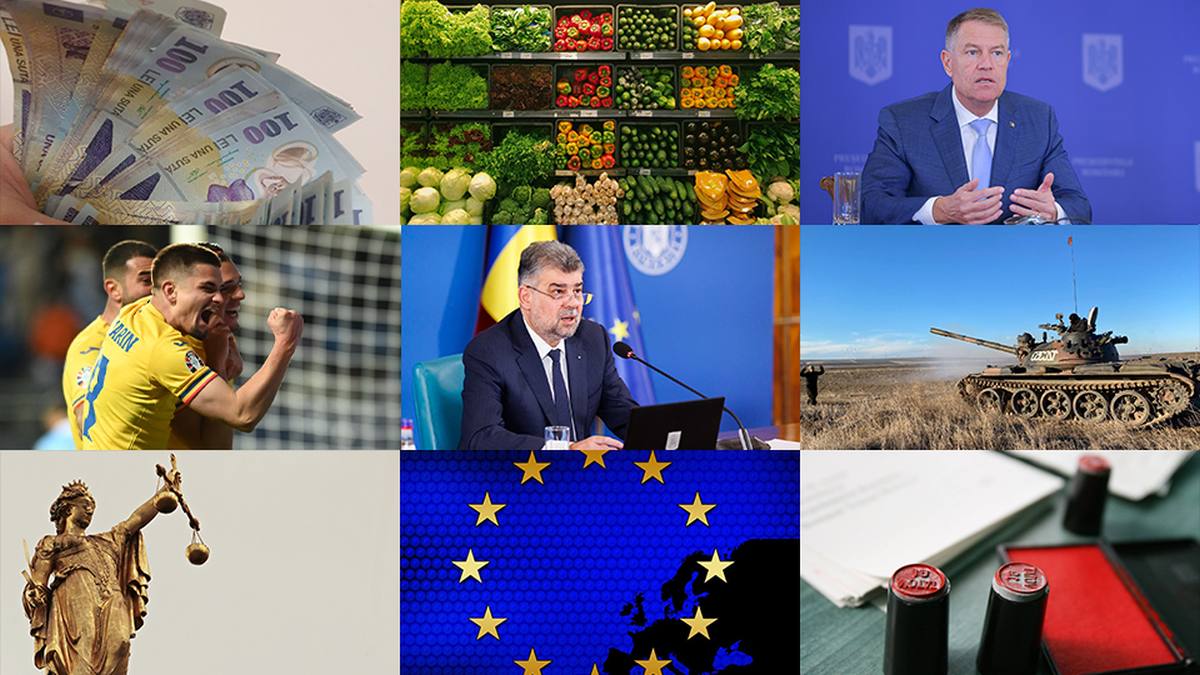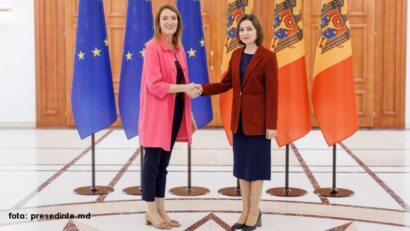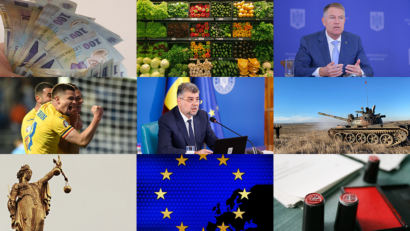THE WEEK IN REVIEW
April 8-12, 2024

Daniela Budu, 13.04.2024, 13:21
NATO – 20 years
Romania believes that the entire Eastern Flank of the European Union and NATO must be connected by road and rail, from the Baltic Sea to the Black Sea. President Klaus Iohannis insisted on this aspect at Thursday’s summit of the Three Seas Initiative in Vilnius, qualifying the discussions as ‘very good’. On Wednesday, at the conference “Romania – NATO – 20 years”, organized by the Ministry of Defense in Bucharest, the head of state said that the current context generated by the war on our borders increases Romania’s relevance as a pillar of regional security and stability. Klaus Iohannis confirmed that the country must intensify its efforts to strengthen the reserve of military personnel, to revitalize the national defense industry, and to modernize the transport infrastructure. Klaus Iohannis:
“The defense of our citizens is one of the fundamental obligations of the Romanian state. However, people’s safety cannot be guaranteed without an army equipped with modern technology. Starting in 2023, Romania increased from 2% to 2.5% the allocation of GDP for defense, i.e. for equipping the Romanian Army, for motivating, training and improving our military, and for increasing the level of interoperability with the allied forces”.
For his part, Marcel Ciolacu declared that joining NATO meant Romania’s return to the community of Western democratic values and principles. Marcel Ciolacu:
“Today, Romania is irreversibly anchored in the Euro-Atlantic community and represents, in turn, a strategic anchor of NATO on the Eastern Flank. Romania remains a mature and credible ally, with a proactive attitude and the ability to act sustainably to achieve its own objectives and protect allied values”.
Defense ministers from NATO countries and chiefs of staff or ambassadors of the North Atlantic Alliance countries participated in the event in Bucharest.
Who is running for the European Parliament?
15 electoral parties or alliances and seven independents registered their candidacies for the June 9 European Parliament elections. The Central Electoral Bureau published the lists of candidates on the institution’s website on Thursday. These are, among others, the PSD-PNL electoral alliance, the AUR Alliance, the United Right Alliance (USR, PMP, Forta Dreptei), the Socialist Romania Alliance, the SOS Romania Party, the Right Alternative Party, the Reper Party, and the UDMR. There are several MEPs on the lists who will run for a new term, but there are also new names. On April 29, the definitive candidates for the European Parliament elections will be announced. According to a Eurobarometer published by the European Commission, more than half of Romanians, 53%, declare that they are very likely to vote in the European parliamentary elections in June, 10% said that they are quite unlikely to vote, and 10% very unlikely.
Energy discussions
Romania has a successful past when it comes to nuclear energy, and the Cernavodă Power Plant is one of the nuclear power plants with the best capacity factors in the world, and with an impeccable past in terms of safety. The appreciation belongs to the director general of the International Atomic Energy Agency (IAEA), Rafael Grossi, who visited Bucharest this week. During the meetings he had with the Romanian authorities, he noted the advanced degree of development of the nuclear energy sector in Romania, exemplified by the investments at the Cernavodă Power Plant and those in small modular reactors. He emphasized that they have an essential role in ensuring the energy autonomy of the country and in reducing costs for consumers. Moreover, the Minister of Energy, Sebastian Burduja, estimates that, starting next month, prices will decrease for Romanians, especially for natural gas. Price drops are also expected for electricity. Also this week, the Chamber of Deputies in Bucharest adopted, as a decision-making body, the project initiated by the Government that establishes the legal framework for the development of investments in the field of offshore wind energy in the Black Sea. “It is a particularly complex project that will allow us to have the first megawatts of electricity produced in the Black Sea in 2032,” said Sebastian Burduja.
Data on trade deficit, GDP and inflation in Romania
Romania’s trade balance deficit in the first two months of this year exceeded 4 billion euros and was approximately 230 million euros lower than the one recorded in the same period last year. According to the National Institute of Statistics, in the first two months of 2024, exports amounted to 15 billion euros, and imports amounted to 19 billion euros. Important weight in the structure of exports and imports were held by cars, transport equipment, and other manufactured products. At the same time, according to the NIS, Romania’s Gross Domestic Product increased last year by 2.1% compared to the previous year. Agriculture, construction and trade contributed to its growth to a greater extent. Instead, industry had a negative contribution to the GDP’s evolution, due to the decrease in the volume of activity. On the other hand, the annual inflation rate decreased in March to 6.6 percent per year, from 7.2 percent in February, being the second consecutive decrease of this indicator. According to the NIS, food, non-food, and services have risen in price the most.





























